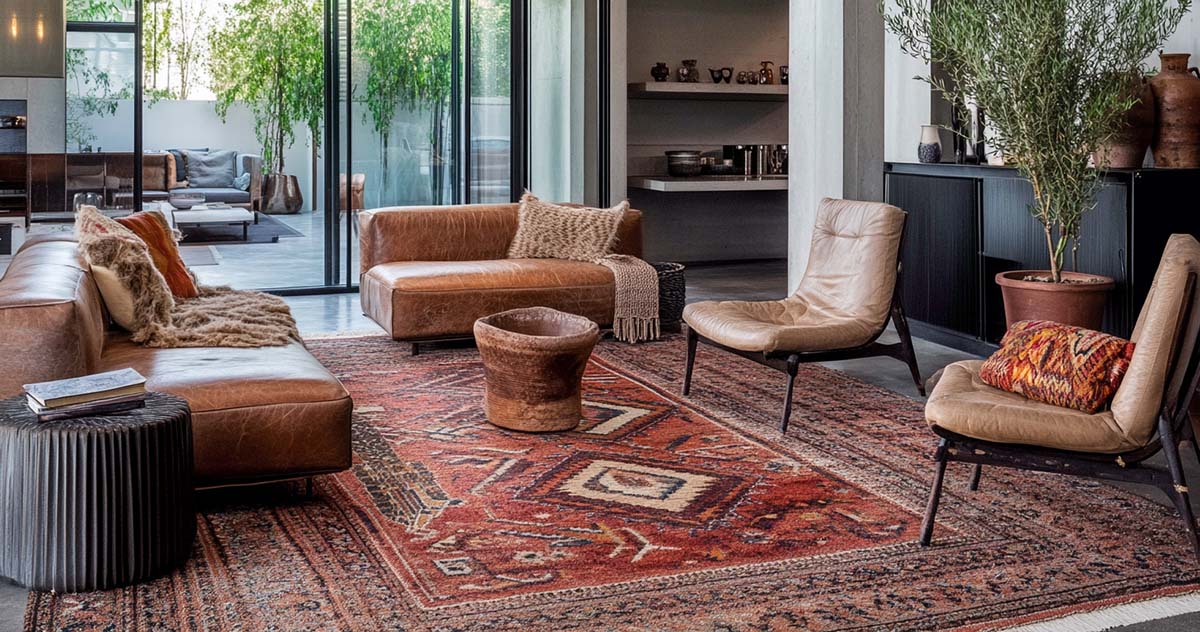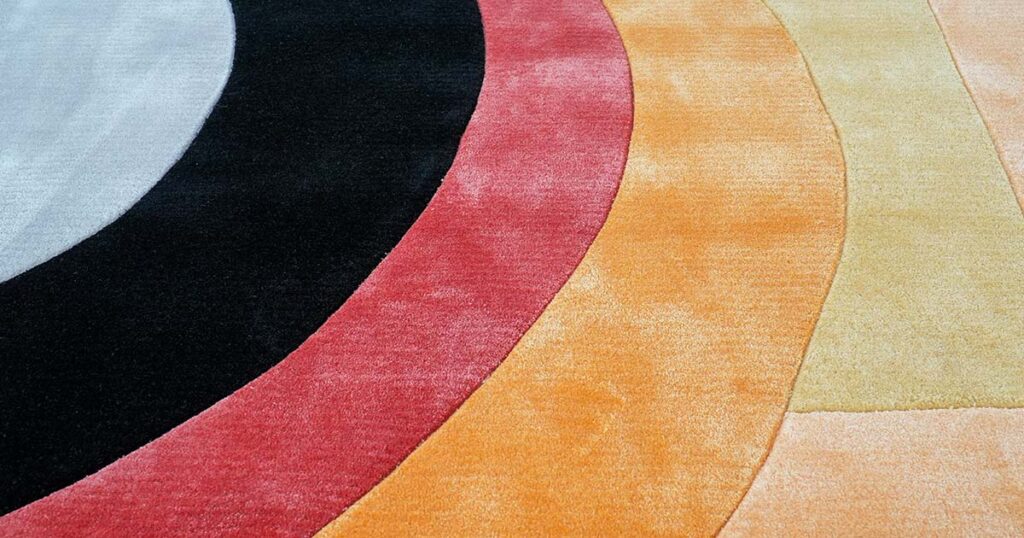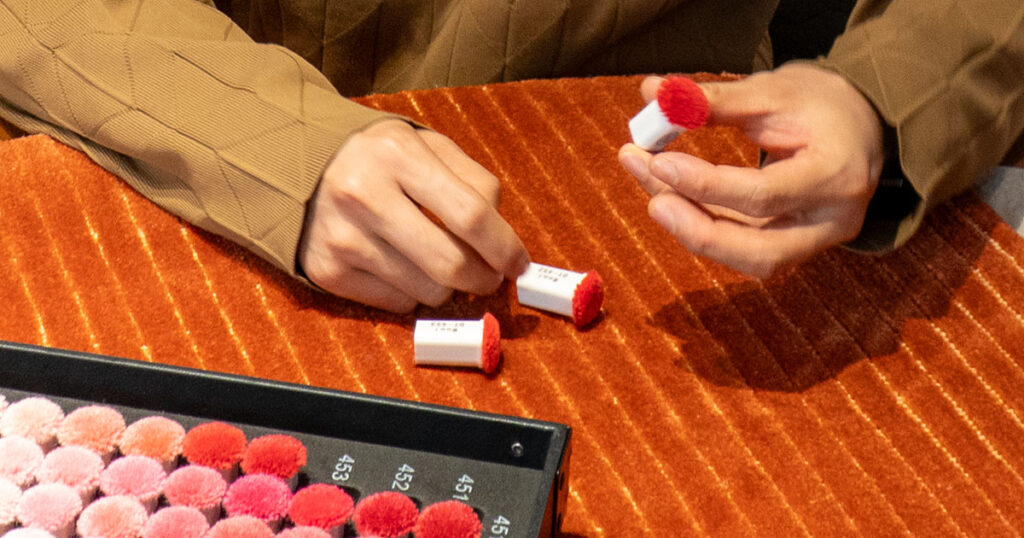Want to infuse your home with vibrant, Southwestern charm?
This blog post covers everything you need to know about Southwestern tufted rug designs.
You’ll learn about their unique characteristics, materials, and key design elements.
Discover how these rugs can transform your space with warmth and color.
Get tips on choosing the perfect rug for your home.
Ready to dive in?
Let’s get started!
Introduction
Southwestern tufted rugs are a popular choice for those looking to add warmth, texture, and a touch of rustic charm to their home decor.
These rugs feature distinctive designs inspired by the art and textiles of Native American tribes in the Southwestern United States, particularly the Navajo.
In this buyer’s guide, we’ll dive into the key characteristics, history, and factors to consider when shopping for a Southwestern tufted rug.
What are Southwestern Tufted Rugs?
Southwestern tufted rugs are characterized by their bold geometric patterns, earthy color palettes, and plush texture.
- They are typically hand-tufted, meaning the pile is created by pushing wool or another material through a backing fabric using a tufting gun or by hand.
This construction method allows for intricate designs and a thick, cushioned feel underfoot. - Common materials used in Southwestern tufted rugs include wool, cotton, and sometimes synthetic fibers like polyester.
Wool is prized for its durability, softness, and ability to hold vibrant colors.
The History and Cultural Significance
Southwestern rug designs have a rich history rooted in the weaving traditions of Native American tribes, particularly the Navajo.
- In the 18th century, Navajo weavers began creating intricate textiles using hand-spun cotton yarn and, later, wool from Churro sheep introduced by Spanish settlers.
These early rugs often featured images of Native American people, gods, and rituals, imbuing them with spiritual significance.
- Over time, Navajo weavers developed distinctive patterns and motifs that are still used in Southwestern rugs today, such as diamonds, zigzags, and stylized representations of natural elements.
The Tufting Process
Tufted rugs are made by pushing yarn through a backing material, creating loops or cut piles that form the rug’s design.
- This process is faster and more affordable than hand-knotting, where each knot is individually tied.
- Tufting allows for greater design flexibility and a plush, even texture.
While hand-knotted rugs are considered the most prestigious and often more expensive, tufted rugs offer an attractive alternative that is still handmade and can showcase intricate patterns.
- They are also generally more durable and easier to clean than hand-knotted rugs.
Southwestern Design Elements
Southwestern tufted rugs are known for their bold, geometric designs and earthy color schemes.
Common design elements include:
- Diamonds, zigzags, and triangles
- Crosses and other symbolic motifs
- Stylized representations of animals, plants, and natural features
- Fret or meandering borders
The color palette often features warm, natural hues like terracotta, rust, beige, and brown, along with accents of turquoise, indigo, and red.
These colors are inspired by the landscapes and natural dyes used by Native American weavers.
Southwestern Rugs vs. Oriental Rugs
While both Southwestern and Oriental rugs are known for their intricate designs and handmade quality, there are some key differences:
- Origin: Southwestern rugs are influenced by Native American weaving traditions, while Oriental rugs come from various countries in Asia, such as Iran, India, and Turkey.
- Design: Southwestern rugs feature bold geometric patterns and tribal motifs, while Oriental rugs often showcase floral and curvilinear designs.
- Color Palette: Southwestern rugs tend to have earthy, muted colors, while Oriental rugs can feature a wider range of hues, from pastels to jewel tones.
- Texture: Southwestern tufted rugs have a thick, plush pile, while Oriental rugs can have a variety of textures depending on the weaving technique used.
Factors to Consider When Buying
When shopping for a Southwestern tufted rug, keep these factors in mind:
- Size: Measure your space and choose a rug that fits the room’s proportions. Consider whether you want the rug to anchor furniture or serve as an accent piece.
- Pile Height: Tufted rugs can have varying pile heights, from low to high. Consider the level of cushioning and comfort you want underfoot.
- Material: Wool is the most common choice for its durability and softness, but cotton and synthetic options are also available at different price points.
- Indoor/Outdoor Use: Some Southwestern tufted rugs are suitable for outdoor spaces like patios or porches. Look for rugs specifically designed to withstand the elements.
- Budget: Prices can vary widely based on size, material, and construction quality. Set a realistic budget and prioritize the features that matter most to you.
Identifying Quality Tufted Rugs
When evaluating the quality of a Southwestern tufted rug, look for:
- Tight, even tufting with no bare spots or loose yarns
- Straight edges and corners that lie flat
- Vibrant, consistent colors that don’t bleed or fade
- A sturdy backing material that doesn’t buckle or shed
Avoid rugs with a chemical smell, as this may indicate the use of inferior dyes or adhesives.
It’s also a good idea to purchase from reputable sellers who specialize in Southwestern or handmade rugs.
Styling Southwestern Rugs in Your Home
Southwestern tufted rugs can work well with a variety of decor styles, from rustic to bohemian to modern. Some ideas for incorporating them into your space:
- Layer a smaller rug over a larger neutral one for added texture and color
- Pair with leather or wood furniture for a cozy, cabin-like feel
- Use as a colorful accent in a minimalist or monochromatic room
- Hang on the wall as a tapestry or headboard for a unique focal point
Consider the overall color scheme and vibe of your room when choosing a Southwestern rug.
Opt for bolder designs in larger spaces, and more subtle patterns in smaller ones.
Cleaning and Care
To keep your Southwestern tufted rug looking its best, follow these care tips:
- Vacuum regularly on a low setting to remove dirt and debris
- Blot spills immediately with a clean cloth and mild detergent
- Rotate the rug every few months to even out wear
- Have the rug professionally cleaned every 1-2 years or as needed
Avoid using harsh chemicals or excessive moisture, which can damage the fibers.
If your rug gets wet, elevate it to allow air circulation and prevent mildew.
Shopping Tips
When shopping for a Southwestern tufted rug, whether online or in-store, keep these tips in mind:
- Read product descriptions carefully for details on size, material, and construction
- Check the seller’s return policy and shipping fees
- Look for customer reviews and photos of the rug in real-life settings
- Request a sample or swatch if available to see the colors and texture in person
- Measure your space carefully and use tape or paper to visualize the rug’s size
Don’t be afraid to ask the seller questions about the rug’s origin, care instructions, or any other concerns you may have.
Where to Buy Southwestern Tufted Rugs
Southwestern tufted rugs are available from a variety of retailers, including:
- Online home decor stores like Wayfair, Overstock, and Amazon
- Specialty rug retailers like Ruggable, Rugs USA, and Rugs Direct
- Local home goods stores and furniture showrooms
- Directly from Navajo or other Native American artisans at craft fairs or online marketplaces
Each option has its pros and cons in terms of selection, pricing, and the ability to see the rug in person before purchasing. Consider your budget, timeline, and preferences when deciding where to shop.
Conclusion
Southwestern tufted rugs are a beautiful and meaningful addition to any home, offering a connection to the rich history and artistry of Native American weaving traditions.
By understanding the key characteristics, construction methods, and styling options for these rugs, you’ll be well-equipped to find the perfect one for your space.




